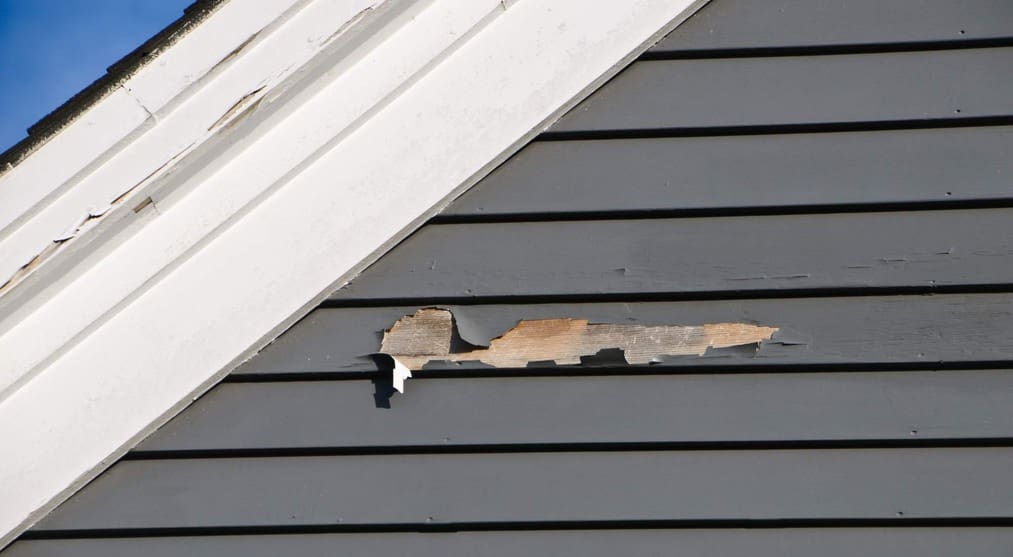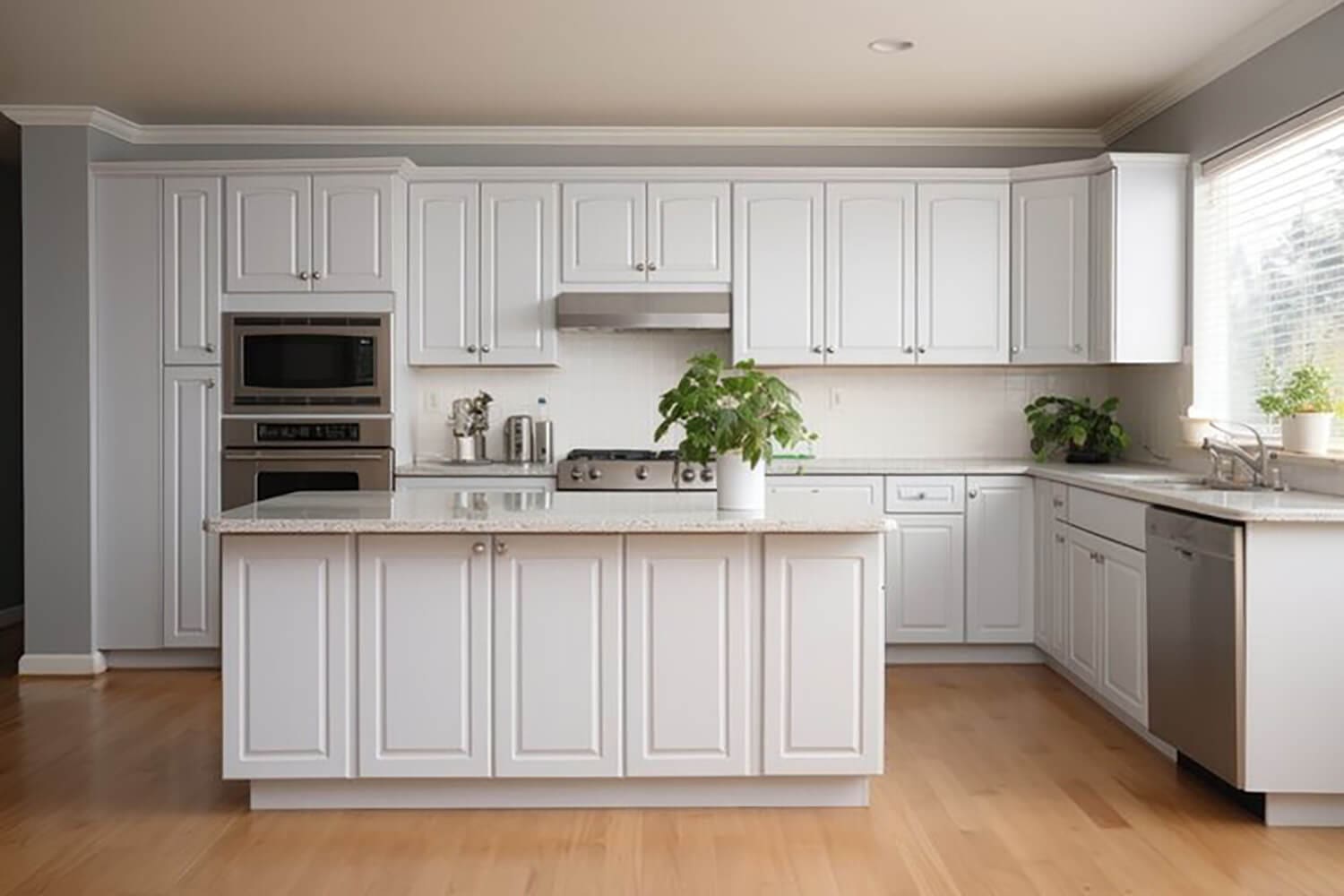
How to Fix Peeling Paint on Exterior Trim During Summer
When Trim Starts to Peel, Summer Isn’t the Time to Wait
Peeling paint on exterior wood trim is more than a cosmetic problem—it’s often the first visible sign of underlying damage to your home’s structure. Trim boards around windows, doors, and rooflines are exposed to the harshest elements year-round, and in the heat of summer, those issues can escalate quickly.
Warm weather may seem like the perfect time to repaint, but it also speeds up deterioration. What starts as a few curling edges or small blisters can quickly spread, leading to wood rot, water infiltration, and major curb appeal issues.
In this guide, we’ll explain what causes peeling paint, why summer conditions make it worse, and what’s involved in properly fixing exterior trim professionally and permanently.
What Causes Exterior Trim Paint to Peel in the First Place?
Understanding what causes peeling paint helps homeowners avoid recurring issues. Most often, the problem starts with poor adhesion between the paint and the trim surface, which can be triggered by several common factors:
- Trapped moisture beneath the paint film
- Prolonged sun exposure breaks down paint resins
- Lack of proper surface prep before the previous paint job
- Incompatible or low-quality paint products
- Painting over dirt, mildew, or old flaking paint
- Using interior-grade paint on exterior surfaces
Trim boards are typically made of wood, which expands and contracts with humidity and temperature changes. If the wood wasn’t dry, clean, or primed correctly before painting, it can cause the paint to lift and crack.
Homeowners who’ve inherited poor workmanship from previous contractors—or have attempted a DIY solution without thorough prep—often see peeling within just a couple of years.
Why Summer Weather Makes Peeling Worse (and Harder to Ignore)
Summer is prime time for exterior painting projects—but it’s also when paint failure can accelerate the fastest. While the warm weather seems ideal for repainting, it’s also one of the harshest seasons for your trim if it’s already compromised.
Here’s why:
- UV rays break down paint film – Direct sunlight bakes your trim boards, especially on the south- and west-facing sides of your home.
- Heat expands wood – As trim boards expand in hot weather, any rigid or poorly bonded paint starts to separate from the surface.
- Humidity worsens moisture problems – Summer humidity can seep into small cracks or unsealed joints.
- Sudden storms accelerate failure – Thunderstorms and sudden temperature drops can create expansion-contraction cycles that stress the wood and paint layers.
In other words, if your paint is already peeling, summer is when things can spiral quickly. Waiting until fall to address it often means more extensive surface failure and more expensive repairs.
That’s why spotting the signs early and taking action during summer is your best strategy for avoiding long-term damage.
The Professional Fix: Surface Prep Is Everything
When it comes to fixing peeling paint on exterior trim, the most important factor isn’t the paint itself—it’s the preparation. Applying a fresh coat over flaking or damaged areas without addressing the root issues will only lead to more peeling within a season or two.
A professional exterior painting company follows a multi-step surface prep process to ensure a long-lasting, flawless finish:
- Scraping and Sanding
All loose, peeling paint must be removed down to solid, bare wood. This is often done with a combination of hand scraping and power sanding. Skipping this step leads to new paint failing prematurely. - Wood Repair or Replacement
If trim boards are soft, cracked, or rotted, they should be replaced, not just painted over. A good contractor will inspect each section and recommend replacements where needed. - Cleaning the Surface
Dirt, mildew, and chalky residue are cleaned off with a mild detergent or specialized exterior cleaner to ensure proper adhesion. - Priming Exposed Wood
Bare wood should always be primed with an exterior-grade, stain-blocking primer. This seals the surface, prevents future moisture intrusion, and helps the paint adhere properly. - Flexible Caulking
Cracks and joints around trim edges should be sealed with a high-performance, paintable caulk to keep water out and prevent future peeling. - Using High-Quality Paint
Finally, the surface is painted with premium exterior paint that’s designed to resist UV damage, mildew, and temperature swings.
These steps may take more time up front, but they’re non-negotiable if the goal is durability and professional-grade results. Skimping on prep is the #1 reason homeowners find themselves repainting every few years.
Why Hiring a Pro Matters for Trim Work
Exterior trim may seem like a small detail, but it’s one of the most visible elements of your home’s exterior. It frames your windows, outlines your doors, and gives your home’s architecture its finished edge. That means when trim paint starts to peel or blister, it draws attention, for all the wrong reasons.
Here’s why hiring a professional painter, rather than tackling trim repairs on your own, makes all the difference:
- Trim work is detailed and exposed
Unlike flat siding, trim has angles, joints, and often decorative profiles that require precise application. A sloppy repair job is obvious and tends to fail quickly. - Pros know how to manage summer conditions.
Timing and temperature matter. A professional team understands how to schedule painting to avoid intense midday heat or high humidity, both of which can ruin a paint job if ignored. - Proper tools and materials are essential.
From specialized primers to flexible caulk and high-performance exterior paints, pros use products that are built to last. More importantly, they know when and how to use them correctly. - Warranties and peace of mind
A reputable painting company will stand behind its work. If something isn’t right, they’ll make it right—something you won’t get with DIY or low-cost contractors.
If your exterior trim is peeling, it’s not just about slapping on new paint—it’s about protecting your home’s exterior envelope. Partnering with a pro ensures your investment lasts season after season, with a result that boosts both curb appeal and property protection.
Don’t Let Peeling Trim Paint Ruin Your Curb Appeal
Peeling trim paint is your home’s way of waving a red flag. It’s not just an eyesore—it’s often the first step toward deeper issues like wood rot, water damage, and energy inefficiency. During the summer months, these problems can worsen quickly under the strain of heat, humidity, and UV exposure.
The good news? With proper preparation and the right professional support, peeling paint doesn’t have to turn into a full-blown repair project. By addressing the issue early and investing in a high-quality fix, you protect your home’s structure, preserve its value, and restore its polished, welcoming appearance.
If you’ve noticed peeling, bubbling, or cracking on your exterior wood trim, now’s the time to act—before summer conditions make it worse. Ready to restore your trim and protect your home’s exterior?
Request a free estimate today and let Prep Smart Painting handle the details—so you can enjoy a home that looks sharp and stays protected all year long.






